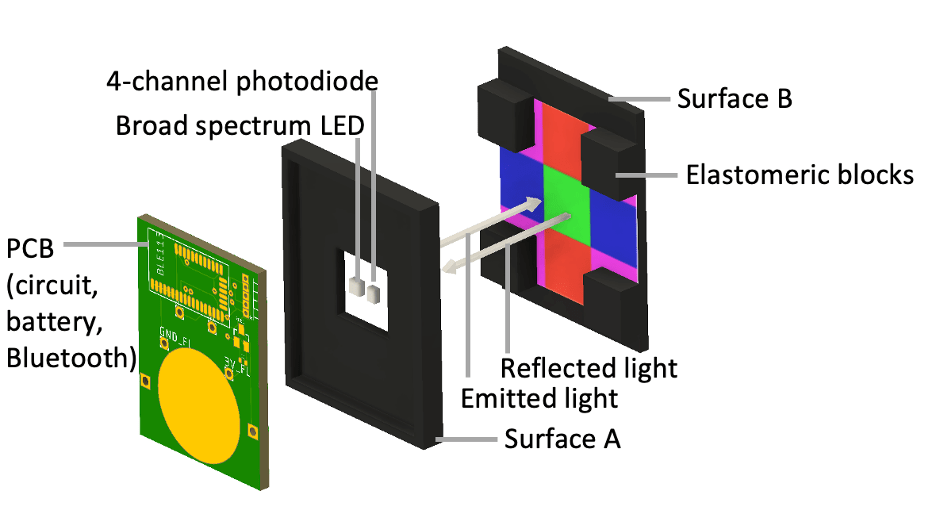Research
Advancing the science of human movement is at the forefront of what we do. Browse the latest research published by members of our center, including visiting scholars, faculty and students.
Current Projects

Environmental Stress and Adaptation
Exercise and the environment (heat, cold, and altitude), together or separate, cause challenges to the body that require adjustments on the cellular and whole-body level. Our research focus is to uncover how humans respond and adapt to these stressors. We study individuals ranging from clinical populations (like hypertension or polycystic ovarian syndrome) to athletes as they all offer a unique perspective of how the body responds. We gain insight into how these stressors can be used to improve quality of life and health span, update safety guidelines, enhance recovery, or optimize athletic performance. Our discoveries allow researchers, clinicians, coaches, and ourselves to better the lives of our community.

Exercise, Allergies, and Histamine
Athletes routinely train and compete at high intensities outdoors, increasing exposure to environmental allergens. Greater exposure to allergens can result in allergies, decreasing quality of life and exercise performance. Many athletes experience seasonal allergies, which are commonly treated with antihistamines blocking the actions of histamine and reducing allergy symptoms. However, histamine is released in exercising skeletal muscle and is important to many exercise responses. Blocking its actions can decrease the health benefits of exercise, worsen recovery from an exercise bout, and impair exercise performance. We are investigating the impact of antihistamines on physiological responses to exercise and how that relates to exercise performance and recovery. We hope to better understand histamine’s role during and following exercise and provide insight into treating allergies for athletes and habitual exercisers alike.

Soccer Cleat Study
Market-available soccer footwear is historically designed according to male athlete mechanics. With known sex differences in movement patterns, joint moments, and joint loading between sex, it should not be assumed that the female body is able to withstand the same amount of rotational and translational traction as do males.
We think that soccer cleats could play a key role in moderating female athletes’ exposure to torsional injury mechanisms, such as those related to ACL injury. Ongoing research into looks to how individual traction characteristics can be best suited to the lower extremity mechanics of the female athlete, inclusive of stud length, stud shape and stud positioning. Research over the course of this dissertation will eventually lead to the design of a customized traction plate for the female soccer player, with the intent of reducing knee loading and anterior cruciate ligament (ACL) injury.

Uphill Running Study
It remains unknown whether uphill running economy can be improved and if so, by what mechanisms these improvements occur. Given the improvements in level ground running economy associated with changes in muscle-tendon properties and lower extremity mechanics, it is reasonable to expect that uphill running economy can also be improved with a targeted resistance training intervention. This study aims to quantify changes in uphill running economy associate with a 12 week resistance training intervention.

Longitudinal Running Study
This project is using machine learning algorithms to develop models for estimation of ground reaction forces during running using inertial measurement units (IMUs) as input, and force-instrumented insoles as the model standard. Data from an initial sample of community runners have been collected in a variety of running conditions, including fixed-pace runs on a track, prescribed outdoor runs over various terrain and grades, and validation runs on a force-instrumented treadmill. Outcomes of the study should lead to improved models of injury prevention and prediction of training performance.

Integration of Shear Sensors into Sports Equipment
We have recently developed a new optical-based sensor, which measures shear forces based on relative changes in absorption of specific light wavelengths reflected from a unique color pattern. Comparatively, this sensor is smaller, lighter weight, and requires less power than previous capacitance-based shear sensors. We are currently working to integrate this sensor into various sportswear applications.
Past Projects
December 2023
Cardiovascular and mood responses to an acute bout of cold water immersion, Emma Reed, PhD Candidate
2019-2022
Integration of Biomechanics-based Informatics for Prevention of Stress Fractures
December 2020
A Simulation Based Framework for Informing Prosthetic Foot Design, Mike McGeehan, PhD
Development of Flexible Control Systems for Assistive Devices, Seth Donahue, PhD
June 2019
The Influence of Internal and External Factors Contributing to Metatarsophalangeal Joint Mechanics and Their Effects on Running Economy, Evan Day, Ph.D.
March 2018
Lower Extremity Joint Stiffness, Energy Generation, and Transfer in Walking and Running Gait, Li Jin, Ph.D.